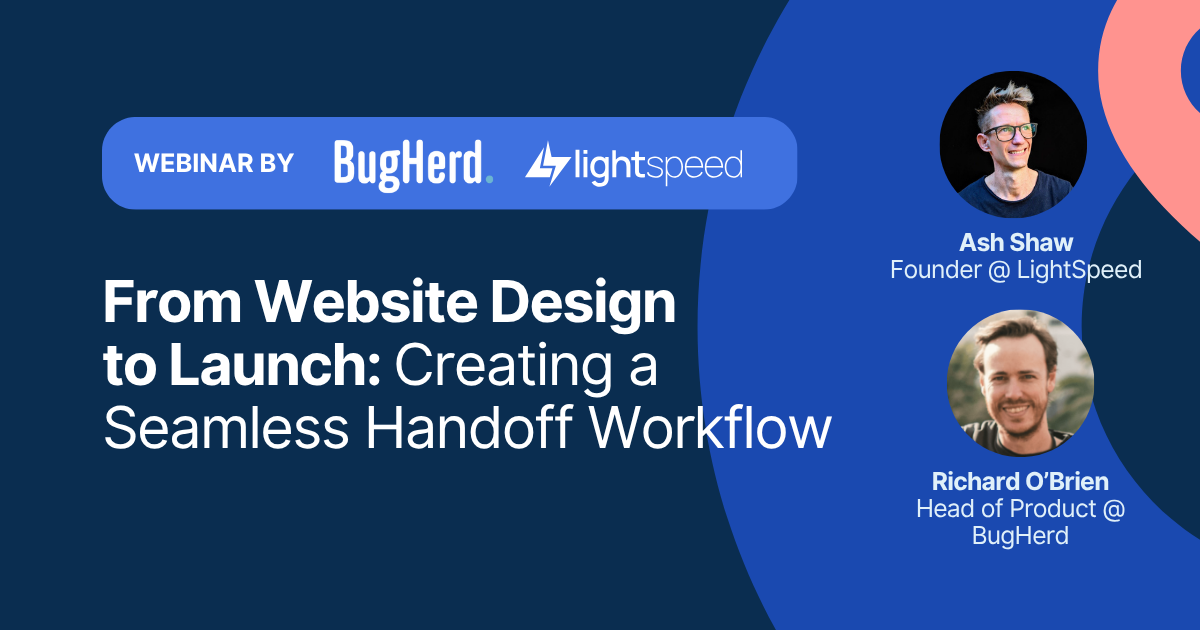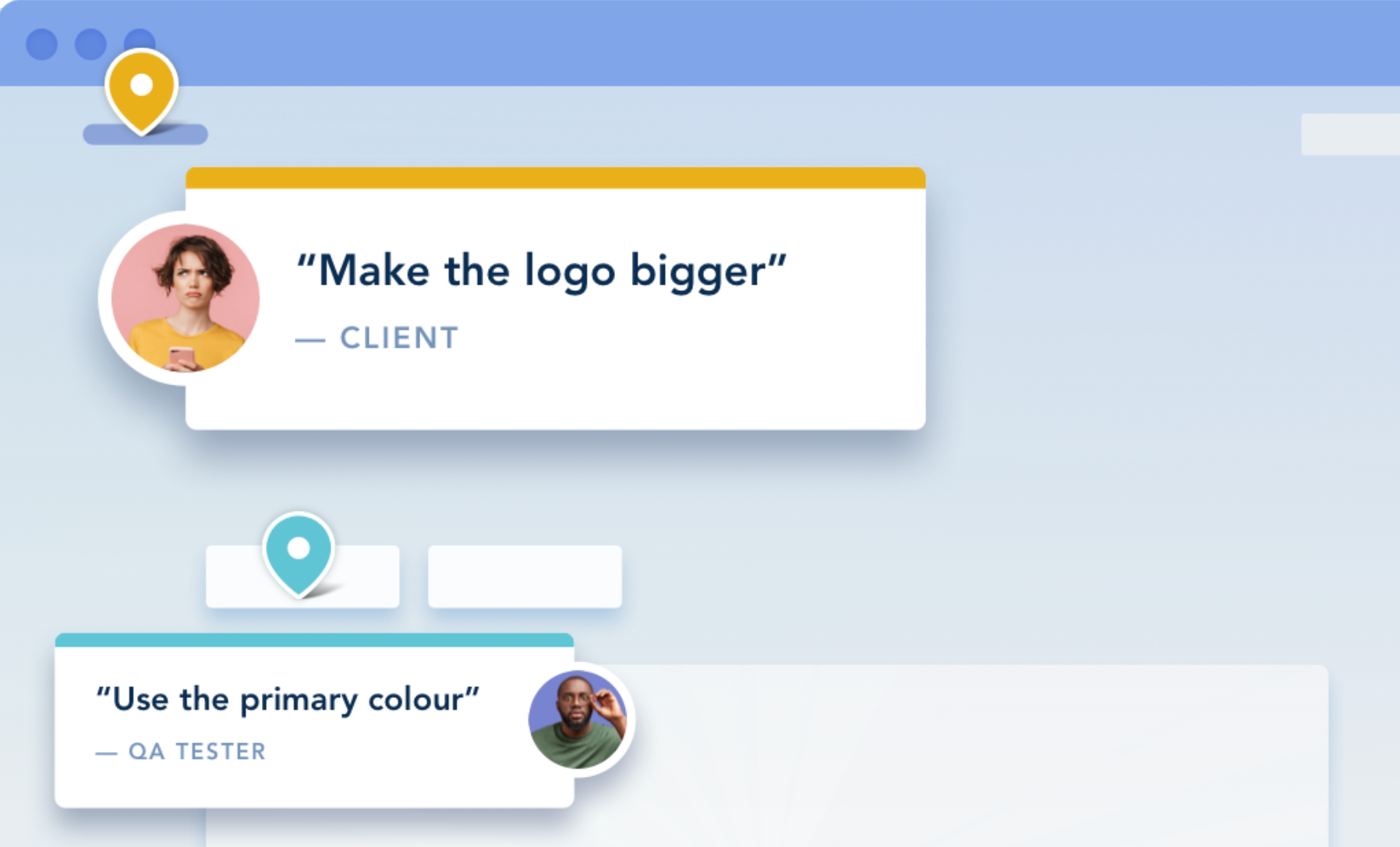BugHerd CEO and former agency owner, Stephen Neville ran a very insightful webinar with Jules Love, CEO of Spark, a consultancy that helps creative and marketing teams adapt to a world with AI.
In this blog, we will go through practical steps on how to implement and leverage generative AI in your agency. This includes exploring key use cases for AI in research, creative concepting, and execution, as well as strategies to overcome adoption challenges, and how agencies can future-proof their operations by integrating AI effectively while keeping human creativity at the forefront.
Watch the webinar on demand or read the highlights in this blog.
Here are the top highlights:
Why generative AI matters
Generative AI tools such as ChatGPT, MidJourney and Stable Diffusion are redefining what’s possible within creative industries. Unlike traditional AI, which is largely used for predictive tasks, generative AI creates new material, including text, images, and even videos. This ability to simulate tasks that were once considered uniquely human allows agencies to ideate, create, and execute projects faster and with fewer resources.
The tools can assist in a variety of tasks, from generating initial drafts of marketing copy to creating visual assets for campaigns. For instance, agencies are already leveraging these tools in ideation sessions, strategic planning, and even final executions.
How agencies are using AI
1. Research and strategy
Generative AI is particularly adept at synthesizing large volumes of data and this makes it a very valuable tool for market research and strategic planning. Imagine being able to summarize interviews, focus group transcripts, or competitor analysis reports in minutes. AI tools can even help build customer personas and test campaign propositions, giving you a head start in developing insights.
One of the first steps in integrating AI into your workflow is understanding its research capabilities. AI can analyze multiple data points and create succinct reports, which helps strategists focus on more critical elements like brand messaging and user personas. For example, using AI to sift through competitor websites or conduct market analysis saves time while ensuring that no detail is missed.
2. Creative concepting
In the creative phase, generative AI offers innovative solutions for brainstorming and prototyping. By quickly generating visual concepts, storyboards, or even prototypes of digital products, AI enhances the speed and depth of the creative process. Tools like Midjourney and DALL.E 2 can generate high-quality images, while ChatGPT can assist in writing first drafts of campaign scripts or ad copy.
One significant real-world application of this was seen in Absolut Vodka’s campaign, where they generated 300 cocktail recipes and accompanying visuals for bars across the U.S. in just four weeks, a task that would have been nearly impossible without AI.

3. Execution of Final Deliverables
While generative AI is still evolving in terms of delivering high-quality final products, some brands are starting to integrate AI-generated content into their final assets. For instance, companies like McDonald’s and Mango have used AI to create video and image content for real-world campaigns.
In the future, we expect more companies to follow suit, as the technology behind AI tools improves. The current capabilities might not yet replace human creativity in full, but they can certainly complement it, reducing the time and resources needed to produce high-quality creative work.
How to Get Started with Generative AI
Implementing generative AI within your agency doesn’t happen overnight. Below are steps to help you start the journey.
1. Invest in training
While AI tools are user-friendly, using them to produce professional-quality work requires skill. Agencies need to invest in training their teams to ensure they can extract maximum value from these tools. You can start with free resources such as YouTube tutorials but also consider more specialized training programs tailored to your industry needs.
For instance, Spark offers in-depth training sessions for creative and marketing teams on how to integrate generative AI into their workflows, covering everything from ideation to final execution.
2. Experiment and brainstorm using AI
One of the key barriers to adoption is the misconception that AI should replace human tasks. In reality, generative AI is most valuable when used as a tool to enhance and complement human creativity. Encourage your teams to experiment by using AI in various stages of the project lifecycle. By iterating and improving over time, your team will develop a deeper understanding of where AI can provide the most value.
An example of experimentation can be seen in agencies using AI for ideation in early stages, allowing them to brainstorm new concepts more rapidly than traditional methods.
3. Develop an AI policy
As agencies increasingly adopt AI, it’s crucial to establish an internal AI policy which outlines how AI will be used within the agency, including where it fits into the creative process and where human intervention is necessary.
Agencies should ensure that they’re on the right licensing plans to protect client data and avoid any potential legal complications. For example, using paid tiers of tools like ChatGPT ensures that proprietary data remains secure.
Overcoming common challenges with generative AI
Implementing AI comes with challenges - from ethical concerns around data privacy to fears of job displacement within creative teams. Some people may worry that AI will take over their role or diminish the quality of the work.
However, generative AI isn’t a replacement for human creativity but rather an enhancement. The best results come when humans collaborate with AI to produce innovative, high-quality work. Agencies can mitigate fears by clearly communicating AI’s role as a supportive tool rather than a replacement.
Agencies should also have open conversations with clients about how they use AI in their processes, as not all clients may be comfortable with it. Transparency builds trust and sets clear expectations for the use of AI-generated assets.
Preparing for the future of generative AI
Generative AI is still in its early stages, and the tools available today are the least powerful they will ever be. As AI technology advances, the capabilities and potential uses will grow exponentially. Agencies must prepare for a future where AI is integrated more deeply into every aspect of their workflows.
As Steve Jobs famously said, "People overestimate what they can do in five years and underestimate what they can do in ten." In the context of generative AI, the tools we’re using today will look primitive in a few short years. Staying ahead of the curve will require agencies to not only implement AI but continually adapt their use of the technology.
Final thoughts
Generative AI presents a significant opportunity for creative and marketing agencies to streamline their processes, unlock new levels of creativity, and drive innovation. By investing in training, experimenting with AI tools, and developing clear policies, agencies can harness AI’s potential to deliver outstanding results for clients.
As generative AI continues to evolve, agencies that embrace the technology today will be best positioned to lead the industry tomorrow.
Jules Love, CEO at Spark, has made available a cheat sheet which outlines how agencies can use AI when running a project, and which tools work best for what. Access the cheat sheet here.
For more information, you can contact Jules directly at julian@julianlove.com

















But don't just take our word for it.
BugHerd is loved by 10,000+ companies,
350,000+ users across 172 countries.
4.8/5
4.7/5
4.5/5
5/5
8.7/10
Sam Duncan 📱📏 🌱
@SamWPaquet
"@bugherd where have you been all my life??
We just migrated our bug tracking over from Asana and have at least halved our software testing time🪳👏📈. "
Ashley Groenveld
Project Manager
“I use BugHerd all day every day. It has sped up our implementation tenfold.”
Sasha Shevelev
Webcoda Co-founder
"Before Bugherd, clients would try to send screenshots with scribbles we couldn't decipher or dozens of emails with issues we were often unable to recreate."
Mark B
Developer
“A no-brainer purchase for any agency or development team.”
Kate L
Director of Operations
"Vital tool for our digital marketing agency.”
Paul Tegall
Delivery Manager
"Loving BugHerd! It's making collecting feedback from non-tech users so much easier."
Daniel Billingham
Senior Product Designer
“The ideal feedback and collaboration tool that supports the needs of clients, designers, project managers, and developers.”
Chris S
CEO & Creative Director
“Our clients LOVE it”
Emily VonSydow
Web Development Director
“BugHerd probably saves us
at least 3-4hrs per week.”